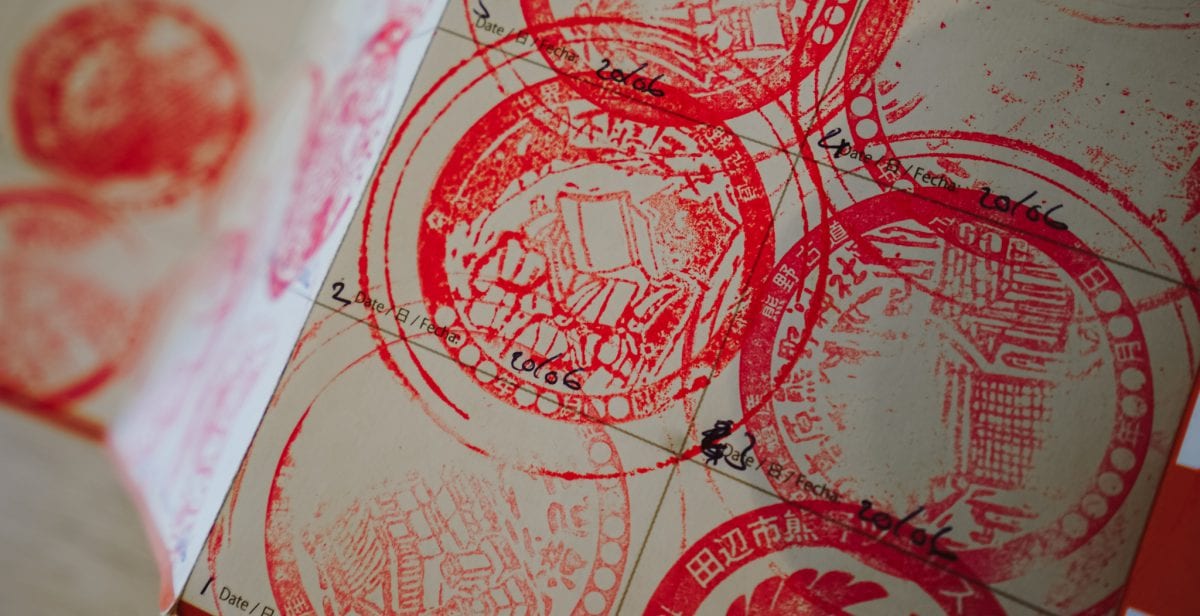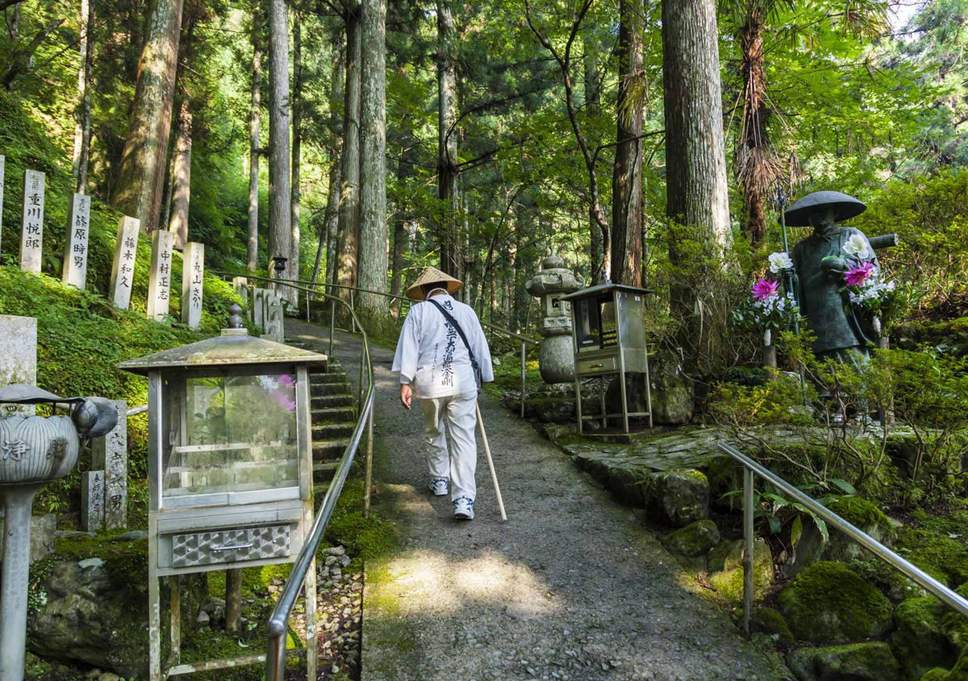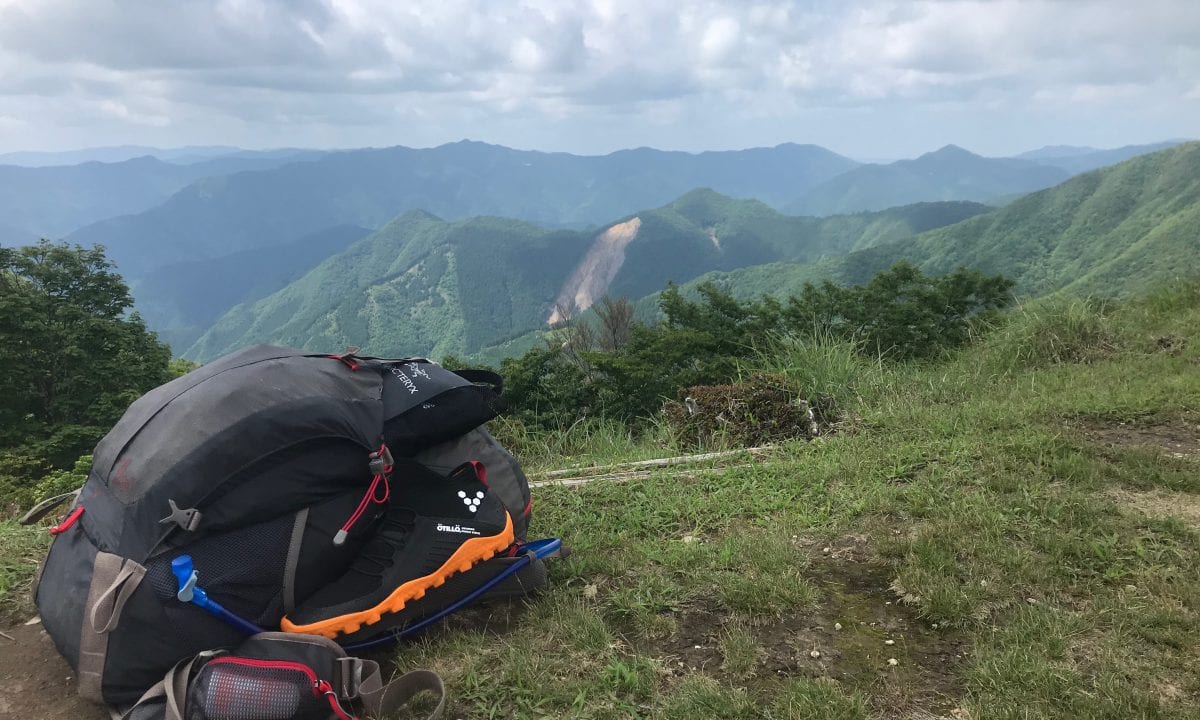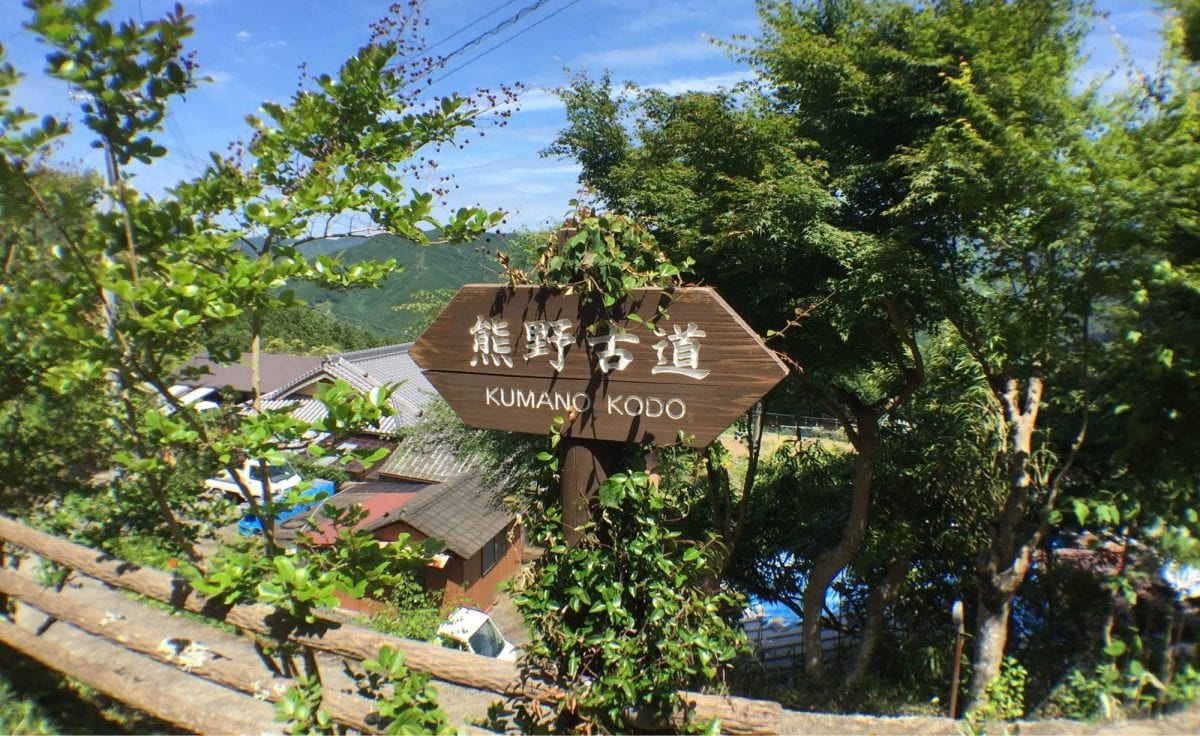Proud. Kid-like proud. Proud-that-you-as-a-five-year-old-where-able-to-write-your-own-name-and-the-teacher-would-recognise-it-proud. The moment the super friendly lady at the Kumano Hongu Heritage Center had checked my stamps from the Kumano Kodo Nakahechi route, nodded and gave me the final stamp in my Dual Pilgrim Credential booklet, I was catapulted back to being kid-proud. The closest thing I got to that nod of improvement from your kindergarten teacher. I had collected the different stamps (18 … well 17 because we had to do a detour) along the most popular part of the Kumano Kodo, the 38-kilometer-long main route that links the three Grand Shrines of Kumano in Wakayama, Japan. And that lady just recognised I did well. It. Felt. Awesome. So, here’s a few words on collecting the stamps on the Kumano Kodo.
- A good way to be in the moment. It might be tempting sometimes to rush along the trail, being in conversation with other hikers or keeping up your pace with your earbuds in. Being forced to stop in regular intervals (sometimes the stamp posts are only 200m apart), helps you be mindful of the trail and of the moment.
- Travel with an open mind. The trail is a pilgrimage trail, with hundreds and hundreds of years and hikers before you. The pilgrims kept to a pretty rigid day and prayer structure (you can find the exact timings of the pilgrims on some of the maps provided by the Kumano Kodo trail team). Being aware of the stamps, the shrines, and its significance might help you be more aware of the footsteps you’re filling. The Kumano Kodo is truly a spiritual, magical trail.
- Flashback to childhood. You might think I’m a total fool, but collecting stamps felt like the middle between a treasure hunt and having your kindergarten teacher giving you a stamp or a sticker to reward you for doing something great in class.
- The stamps are awesome. Have a look at the photos either on the top of the page or below. Each shrine or other stamp point has its distinct stamp, one even more beautiful than the other.
- Proof of your achievement. The main point of the stamps, however, is a bit more transactional. It is proof of you walking the trail. And that brings me to the last point.
- Get your Dual Pilgrim Credential. I’ll get to that in a second, but if you finish both the Kumano Kodo and the Way of St. James, you’ll be able to get an official Dual Pilgrim Credential, a recognition that you finished both UNESCO World Heritage pilgrimage routes. If you finish the Way of St. James first and then the Kumano Kodo, you’ll get a certificate from the Head Priest of the Kumano Hongu Taisha Grand Shrine to offer gratitude and congratulations to Dual Pilgrims. The certificate is made from local Washi Japanese handmade paper and features the character for “Way” in the background (written by the Head Priest personally). There is even a special Dual Pilgrim Taiko Ceremony in which you are allowed to drum on the sacred Taiko to express your feelings, emotions and thoughts—an experience of the body, to complete your spiritual journey. If I had known that before finishing my Kumano Kodo, I would have made sure to finish the Way of St. James first …
The Dual refers to both the Kumano Kodo and the Way of St. James, the only two UNESCO World Heritage pilgrimage routes. And that, in its turn refers to the pilgrimage background of both trails. So your Dual Pilgrim Credential has two sides, one for the Kumano Kodo and one for the Way of St. James.So, your booklet and the stamps are a sign you have ‘completed’ your pilgrimage, but what is ‘complete’ in this sense, especially as the Kumano Kodo has different trails?
For the Kumano Kodo ‘completing’ means hiking
- Takijiri-oji to Kumano Hongu Taisha on foot, the Nakahechi part of the trail (about 38 km), or
- Kumano Nachi Taisha to/from Kumano Hongu Taisha on foot (about 30 km), or
- Hosshinmon-oji to Kumano Hongu Taisha on foot (about 7 km) plus a visit to Kumano Hayatama Taisha and Kumano Nachi Taisha (note: when I was hiking in 2019, this part of the trail was closed), or
- Koyasan to Kumano Hongu Taisha on foot, the Kohechi part of the trail (about 70 km).
For the Way of St. James, you will need to
- at least the last 100 km on foot, or
- at least the last 100 km by horse, or
- at least the last 200 km by bicycle
To complete the paperwork to complete the Camino de Santiago you will need to go to the pilgrim’s office to receive the stamp from the cathedral. The completion stamp for the Kumano Kodo is located at the Kumano Hongu Heritage Center near Kumano Hongu Taisha.
Completing both will have you receive a completion certificate at either Kumano Hongu Heritage Center (near the bus station at Hongu Taisha) or the Information Center next to the Kii-Tanabe station.
- Tanabe Tourist Information Center (next to the JR Kii-Tanabe station)
- KUMANO TRAVEL Support Center (near JR Kii-Tanabe station)
- Kumano Hongu Heritage Center (near the bus station at Kumano Hongu Taisha)
- Kumano Kodo Kan Pilgrimage Center (next to Takijiri-oji, opposite the trailhead)
- At some of the accommodations along the trail, you will be able to pick up a credential, e.g. in Tanabe City, depending on availability.
- Or just order it online from the Kumano Travel Community Reservation System (which is also a very convenient website to book all your accommodations for the trail).
In Spain the credential is available at:
- Turismo de Santiago Information Center (near the Santiago Cathedral)
Ok, so you decided on collecting stamps and got your Dual Pilgrimage Credentials booklet.
Looking for the stamps is sometimes a small treasure hunt and it definitely is worth it keeping your Kumano Kodo Stamp List close, especially on the stamp-heavy Nakahechi part of the trail to avoid missing a stamp post and having to return. On the Kohechi trail, stamp posts are further away.
Stamps are usually located in wooden stands, but some can also be located in your accommodation, in a bus-stop-meets-vending-machine, in a tourism office, or just in a small wooden box next to the trail. In any case, they consist of a unique stamp with a small (usually red) ink pad. Ah, and after use please close the ink pad so that it does not dry out for the next pilgrims.
he Kumano Kodo completion stamp is the Kumano Hongu Taisha one, so please remember to have it stamped on the first page of the Kumano Kodo side of the credential under the heading “COMPLETION OF PILGRIMAGE” (the team there will also check for your other stamps).






1 comment
I walked the Camino and received my Compostela certificate. I can’t find the book of stamps. If I bring my Compostela certificate instead of the book of stamps and collect all the stamps along the Kumano Kodō, would the people in Japan give me dual certificate?